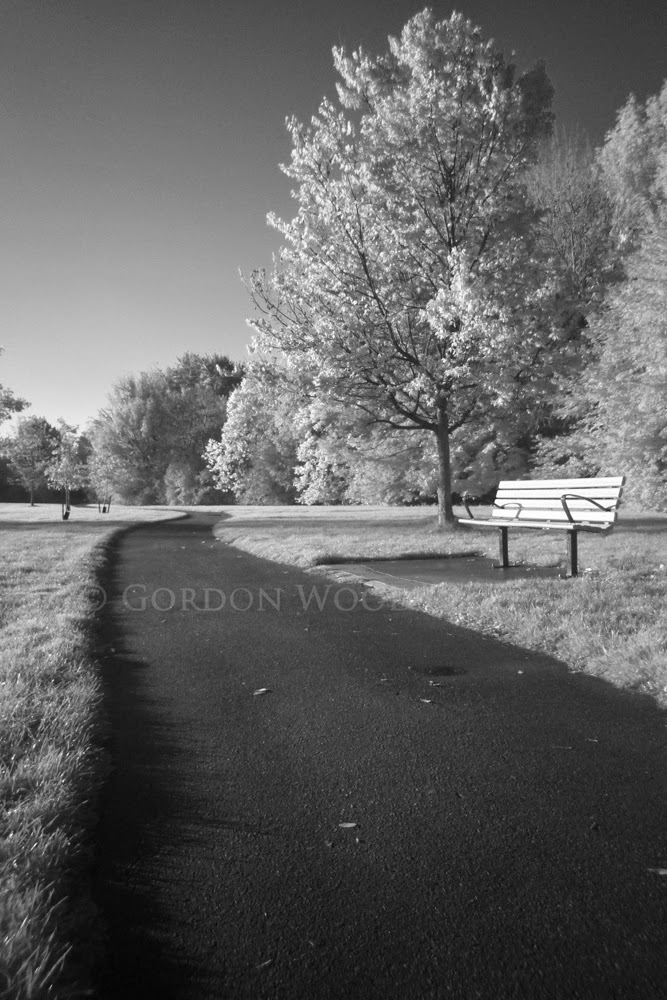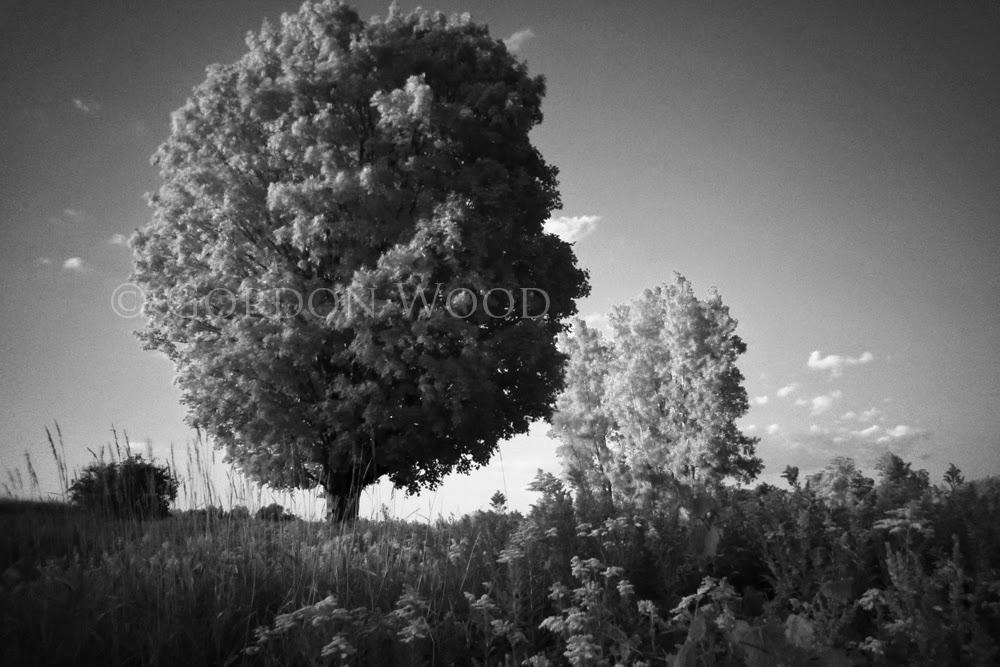We’ve all seen the articles stating that you can get otherworldly infrared effects by having a little irreversible surgery done to your DSLR sensor. Without a special filter that’s mounted in front of the camera’s CMOS sensor, infrared light would normally spoil your images. So, in order to invite infrared light in, the filter needs to be removed. Not willing to dedicate a DSLR to infrared-only, I looked for other ways to easily get on the infrared bandwagon.
As I still occasionally shoot with medium format black and white film, the obvious thing for me was to get some infrared-sensitive film and a recommended filter. This filter is a deep red filter that favours light with wavelengths of 720 nanometers or longer. If this is sounding too techie and out of your league – hang in there – I have a simple digital solution.
By taking that same filter and holding it in front of my CCD sensor-based point and shoot camera, I was astounded at how well the infrared effect came through. Now, in colour, the image does look ethereal, but predominantly red. My preference is to either switch the camera to monochrome before taking the shot, or convert to black and white after in software. After shooting the same scenes using this technique and then using the film camera with the same filter, the results are surprisingly similar.
The reason that the CCD sensor works is that it doesn’t have the infrared-removing filter that’s built onto CMOS sensors. So, by using a deep red filter in front of a CCD camera lens, you are filtering out much of the visible light and letting mainly infrared light hit the sensor. Using the filter in front of my CMOS-based DSLR camera, however, I verified that the infrared effect is not really achievable.
What about using smartphone cameras with this method? Unfortunately, the newer phones seem to be equipped with CMOS sensors, so they’re generally not a good candidate.
You may be wondering by now what this “infrared effect” is that I’ve been blathering on about. Simply, if you take picture through a deep red filter onto either infrared film or a CCD sensor on a sunny day, the vegetation (leaves, grass) will appear white or pale. It gives the impression that frost or snow has settled on the trees and lawn. At the same time, the sky appears dark, giving a dramatic contrasty scene.
Have a look at the two images in this post, both shot in summer with my point and shoot camera and the deep red filter. Have a tripod handy, though. The filter gives 5-6 stops of attenuation, meaning exposures are going to be very long.

